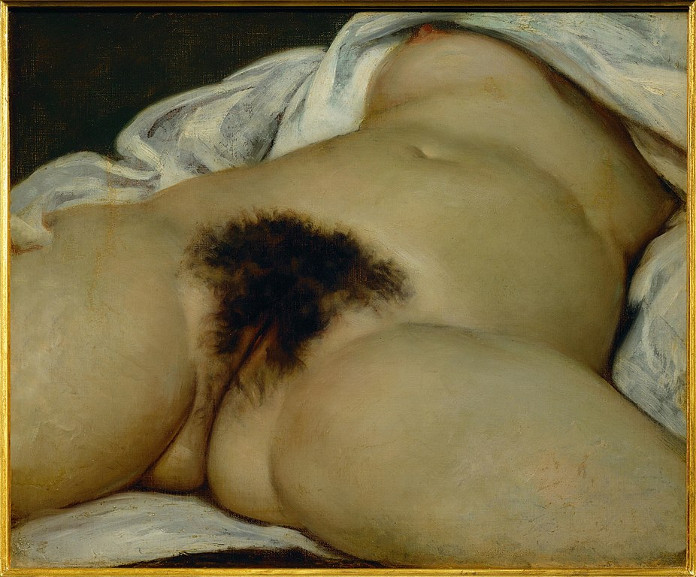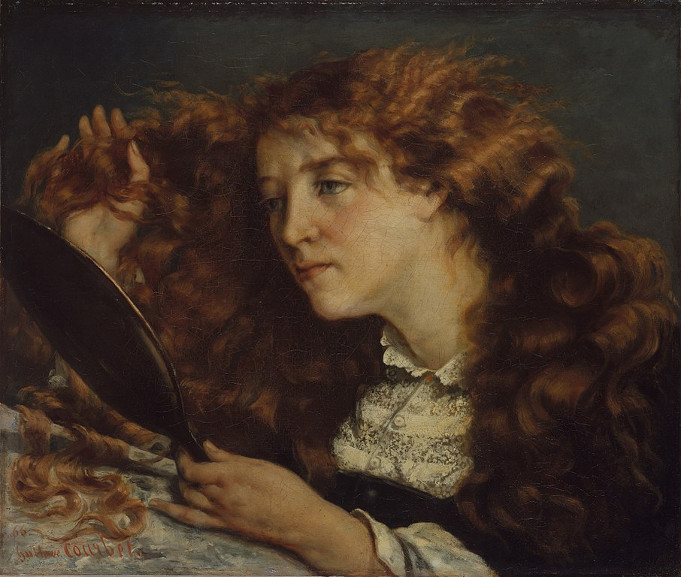The Origin of the World and Scandal - Gustave Courbet’s Provocative Painting
The 19th century was marked, among many things, by the emergence of a significant number of art movements that changed the ways humanity perceived the role of art and the artists in the society. As a reaction to Romanticism, the most lasting movement, in the 1840s Realism appeared amid the great transformations France was undergoing at the time.
This particular stylistic persuasion was expressed through literature and painting, aiming to perceive the contemporary issues objectively, without any idealization, without the unnecessary drama and pathos typical for the Romantics. To a certain extent, it can be said that Realism was a socially driven movement that took into consideration vast shifts that occurred thanks to the Industrial revolution.
The lead painter behind the Realism was the French painter Gustave Courbet. This renowned figure was quite rebellious as he rejected the conventions imposed by academia and set on an innovative painterly course far more socially engaged, grounded, and easier to comprehend visually. Courbet’s vigor could be marked as of proto-modernist provenance since his practice influenced the following generations of artists gathered around Impressionism and Cubism.
Alongside the tremendous depictions of peasants at work, remarkable portraits, and landscapes, Courbet is probably the first artist to depict the female genitalia in blatant fashion deployed of any particular religious or mythological context. The painting simply called L'Origine du monde or The Origin of the World is twofold because of such bold depiction of something that was considered taboo, as well as because of the subversive title.
Ever since its conception, the artwork was the subject of numerous discussions and scholarly interpretations; even today it is still equally controversial and arresting. The rest of this text will pay a closer look at The Origin of the World with a special emphasis on why it was commissioned, if it belongs to a larger composition, and how we relate to it in the contemporary moment.

The Commission and The Depiction of The Muse
Namely, the notorious oil on canvas made by Gustave Courbet in 1866 features a close-up depiction of the genitals and abdomen of a female nude lying on a bed with legs spread. Although at first glance the very position of the body evokes eroticism, the same could suggest a different psychological state - perhaps melancholy, or if we are about to move further, even the molested body or ultimately a dead corps (a belief supported by some critics).
The interpretations are indeed in the eye of the beholder and can be supported by the suggestive title, indicating the reproductive potential of the exposed genitals. the historical fact that the painting was commissioned by Halil Şerif Pasha (Khalil Bey) narrows them down. Apparently, this Ottoman diplomat got introduced to Courbet by Charles Augustin Sainte-Beuve shortly after he moved to Paris. Dazzled by the painter’s style, Khalil Bey ordered The Origin of the World for his personal collection of erotic pictures which by then included Ingres’ Le Bain turc (The Turkish Bath) and another work by Courbet, Le Sommeil (The Sleepers).
For decades the art historians have debated who Courbet's model for the painting was. The common belief was that it features his muse, Joanna Hiffernan, who was the lover of American painter James Whistler, and Courbet’s friend. Namely, Hiffernan was depicted on a series of four portraits entitled La belle Irlandaise (Portrait of Jo) painted between 1865 and 1866. She was a redhead which does not match with the darker pubic hair of the women featured on L'Origine du monde, which then led the scholars to believe the model was Constance Quéniaux, a former dancer at the Paris Opera and a mistress of the Khalil Bey, or Marie-Anne Detourbay, who was his another mistress.

The Head That Belongs To The Body?
In 2010, an anonymous collector bought a painting for $1884 in a Parisian antique shop, believing it is the upper part of the head of the female body depicted on The Origin of the World. Although painted in Courbet’s signature style as the physiognomy of the model’s face are neatly portrayed showing idealized, yet erotically charged sentiment, this artwork went under the public debate.
Courbet expert Jean-Jacques Fernier confirmed this portrait is the upper section of The Origin of The World that was severed from the original piece. On the other hand, The Musée d'Orsay, to which the famous painting belongs, indicated that this one was not part of a larger piece.
The art research Centre CARAA aligned the two artworks via pigment analyses, while Le Monde art critic Philippe Dagen found the claims confirming the portrait and The Origin of The World part of the same artwork dubious, and indicated the stylistic differences in style.
Ultimately, the painting was entered Gustave Courbet’s catalog raisonne, although the chief curator at the Courbet Museum remained unconvinced of its origin.
Marina Abramović on Courbet's The Origin of the World
The Provocation Behind Courbet's The Origin of the World
At the time this piece was produced, the represented image was considered a complete taboo in the West, and although the moral standards changed throughout the time, The Origin of the World is still perceived as controversial.
Now, the question is: what makes it so provocative? Is female genitalia still something shameful despite the fact it serves as both reproductive and sexual organs? The very fact it was painted by a man requires a feminist intervention concerning the male gaze which unravels the power relations in the society and indicates the density of patriarchy and male domination.
On the other hand, if we take into consideration that the represented body is an actual corps, the analysis can take us in a completely different direction as we embark on Courbet’s engaged agenda - perhaps the painter wanted to tackle another taboo - the crime as an aftermath of sexual desire.
To support this claim, it is mandatory to add the fact that the former owner of the painting was the psychoanalyst Jacques Lacan, who bought it on an auction and installed in a country house in Guitrancourt he shared with his spouse, actress Sylvia Bataille.
Whatever may be the case of the painter's initial impulse, The Origin of The World painting has inspired numerous artists - from Marcel Duchamp (his last major work, Étant donnés (1946–1966)), the French artist Orlan (who interpreted the iconic image by featuring a male version with a penile erection in her 1989 L'origine de la guerre / The Origin of War), to British artist Anish Kapoor (a 2004 installation called L'Origine du monde, which references Courbet's painting) or the Serbian performance artist Tanja Ostojić (her parody of The Origin of The World was a 2005 poster called the EU panties). This remarkable work of art surely still remains a matter of interest for many.
Editors’ Tip: L'Origine: The Secret Life of the World's Most Erotic Masterpiece
As the first artist authorized by the Orsay Museum to re-create Courbet's The Origin of the World, author Lilianne Milgrom was thrust into the painting's intimate orbit, spending six weeks replicating every fold, crevice, and pubic hair. The experience inspired her to share her story and the work's riveting clandestine history with readers beyond the confines of the art universe. L'Origine is an entertaining and superbly researched work of historical fiction that traces the true story of the artwork's unlikely tale of survival, replete with French revolutionaries, Turkish pashas, and nefarious Nazi captains. But L'Origine is more than a riveting romp through history-it also sheds light on society's complex relationship with the female body.
Featured image: Gustave Courbet - The Origin of the World at Musee d'Orsay. Image via Wikimedia Commons.
Can We Help?
Have a question or a technical issue? Want to learn more about our services to art dealers? Let us know and you'll hear from us within the next 24 hours.

